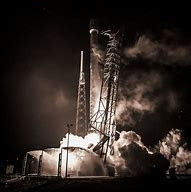SpaceX Falcon 9 Launches Successfully off Vandenberg Space Force Base to Bring Worldwide Connectivity
SpaceX is preparing to make another giant leap on the evening of Tuesday, September 24, 2024-a flight that is highly awaited by both space and technology users. This Vandenberg Space Force Base, California-launched flight will carry a total of 20 Starlink V2 Mini satellites into orbit, significantly boosting the satellite internet constellation for SpaceX. Its aim is to foster global connectivity, with a focus on low or poorly connected internet areas, using improved satellite technology.
For more informative articles, visit website https://trendyvibesdaily.blogspot.com
Mission Overview
Of course, the undisputed star of this mission will be the Falcon 9 rocket-battle-tested and always ready as part of the workhorse fleet. This booster has flown on ten missions to date and has previous experience in several high-profile missions such as crewed spaceflights and Earth observation missions. This is a point of significance in establishing the sustainability versus cost efficiency of space travel: recovering and refurbishing rockets reduces overall costs.
This launch specifically aims at deploying 20 Starlink V2 Mini satellites, smaller variants of the regular Starlink satellites SpaceX has been producing. Equipped with Direct-to-Cell technology, these V2 Mini satellites will help boost mobile phone connectivity directly from space. This is a great leap in the direction of seamless communication networks for very remote and rural areas where the terrestrial infrastructure is practically nil.
What to Expect During the Launch
The Falcon 9 will take off Tuesday evening from Vandenberg Space Force Base. The Falcon 9's first stage booster is programmed to make its spectacular return to Earth after deployment of the Starlink satellites, touching down on the drone ship "Of Course I Still Love You", positioned out in the Pacific Ocean. This is a perfected activity on the quest by SpaceX to develop reusable rockets-key toward reducing the costs of space exploration.
For those who'd like to watch the launch live, SpaceX generally provides a live broadcast through official channels of their website and YouTube.
Expanding Starlink's Global Footprint
One of the key elements of this launch is its contribution to the extension of Starlink's satellite network across the globe. Starlink has become extremely popular with people residing in rural areas of the United States and other developed nations, and the company has targeted the extension of services to more under-served regions. Most notably, Starlink recently launched services in the Republic of Burundi-a serious implementation towards its goal of global satellite internet coverage.
Adding to the constellation capacity and furthering their capability of low-latency high-speed internet in the most remote areas, these 20 new Starlink V2 Mini satellites reach the orbit. The spacecraft also feature in Direct-to-Cell connectivity, a feature that has changed communication in regions where traditional cell towers are impracticable.
Latest Updates
Starlink V2 Mini satellites: Smaller, more efficient, the satellites are designed to better serve mobile phones on the ground. Booster's 10th flight: The Falcon 9 booster flying will mark its tenth flight after nine previously successful flights. Starlink recently expanded availability to the Republic of Burundi, among other new global availabilities.
FAQs
1.At what time will the Falcon 9 take off?
It is scheduled for the evening of Tuesday, September 24, 2024; this being so, depending on the final weather conditions and other technical factors. Live updates can be received from official channels at SpaceX.
Launchings are going to take place from Vandenberg Space Force Base in California, which is a highly used location for polar orbits and other missions in which certain trajectory paths must be flown.
3. What is the payload of this mission?
The Falcon 9 rocket will deploy 20 Starlink V2 Mini satellites, to further activate the reach of global internet connectivity, especially with technology like Direct-to-Cell.
4. What is special about the landing of the booster?
After launch, the first stage of the Falcon 9 will make its routine attempt at landing on the drone ship "Of Course I Still Love You" in the Pacific Ocean. This is in the name of reusability, making future launches cheaper and key to SpaceX's business model.
5. What is Starlink, and how does it work?
Starlink is a SpaceX satellite internet constellation that will bridge the whole world with latency-low and high-speed broadband. Each collaborates in the mesh network at Low Earth Orbit, beaming down the Internet onto the large ground station and smaller user terminals.
6. What is Direct-to-Cell technology?
This new feature of Starlink allows satellites to connect directly with mobile phones, even in areas bereft of traditional cell tower coverage. This comes quite in handy for rural or disaster-stricken areas.
Conclusion
The Falcon 9 launch from Vandenberg Space Force Base is expected to be more than deploying another satellite. It speaks volumes to ever-improving access to the Internet globally, coupled with mobile connectivity through the use of advanced technologies like Starlink V2 Mini satellites and their direct-to-cell features. While SpaceX is on this road of continuous innovation, the role it's playing regarding communication and exploration in respect of global connectivity is getting deeper and more profound with each new successful mission.
Stay tuned for more information on the launch and follow the live stream as it gets up close and personal with the action.










0 Comments